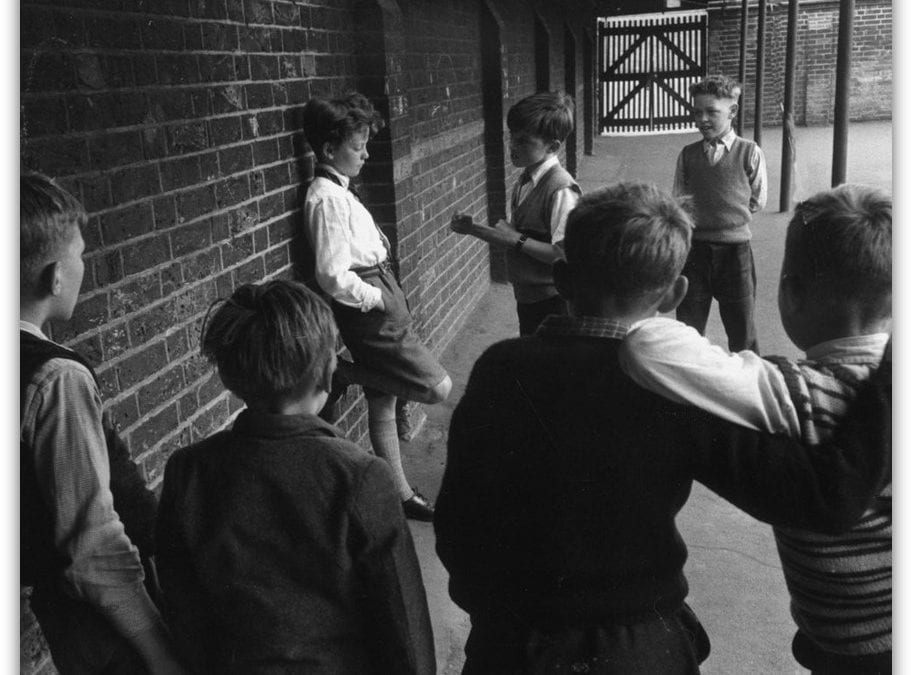
Silent Suffering: Unveiling the Darkness of Bullying
Recognizing the Issue
Imagine being a young teenager, just trying to navigate the ups and downs of growing up. Now picture facing daily taunts, threats, and even physical harm from your peers. This is the harsh reality for many adolescents and pre-adolescents who fall victim to bullying.
For a full two years, Johnny, a 13-year-old, suffered as his classmates treated him badly. They harassed him for money, forced him to drink unpleasant things like weeds and detergent-laced milk, physically assaulted him in the restroom, and even went so far as to put a string around his neck treating him around like a pet. When questioned about their actions, the bullies admitted they targeted Johnny simply because they found it entertaining! (newspaper clipping presented in Olweus,1993, p.7). (1)
This brief newspaper clipping paints a grim picture of the cruelty that children and adolescents can exhibit until our day towards each other under specific circumstances. It highlights the harrowing reality of life at school for a victimized student.
What makes it even harder is that bullying often happens behind closed doors or in hidden corners of the schoolyard, away from the prying eyes of adults. So, while teachers and parents may be doing their best to support their kids, they might not even realize that bullying is happening right under their noses.
This lack of awareness only adds fuel to the fire. Bullies continue their hurtful behavior unchecked, leaving their victims feeling isolated and alone. It’s like a silent epidemic, silently spreading its toxic effects without anyone noticing.
In 2018, a survey conducted in a school in Argentina shed light on the prevalence of bullying among students. The data revealed a concerning trend, highlighting the extent to which bullying was impacting the school community.
The presented graphs paint a vivid picture of the bullying landscape within the school. The Fist graph presents the stark reality of the number of bullied students identified in the survey. As we delve deeper into the data, the second graph provides a spatial perspective on the frequency of physical attacks experienced by students.
Understanding the Impact of Bullying
Bullying takes a heavy toll on Students. Its not just about the physical harm, it’s the emotional pain of feeling isolated and alone. Bullying can make it hard to focus in school, affecting grades and academic performance. It even impacts physical health, increasing the risk of issues like obesity due to stress.
<
Bullying Solutions: Creating Safe Spaces
Bullying remains a significant concern in schools, yet proactive measures can be taken to prevent and address it effectively. Here are several solutions that schools, parents, and students themselves can implement:
Schools should:
- Promote kindness and empathy: Develop social-emotional learning programs that encourage students to appreciate diverse perspectives and treat one another with respect.
- Cultivate a safe and inclusive environment: Foster a culture where students feel empowered to be themselves and report instances of bullying without fear of retaliation.
- Empower bystanders: Provide students with the skills and confidence to intervene safely and effectively when they witness bullying.
- Enforce clear consequences: Establish a robust anti-bullying policy with transparent consequences for engaging in bullying behavior.
Parents can:
- Initiate open discussions about bullying: Educate children about what constitutes bullying and how to respond to it in a manner that prioritizes safety.
- Boost their child’s self-esteem: Encourage participation in activities and hobbies that bolster their child’s self-confidence.
- Maintain open lines of communication: Foster an environment where children feel comfortable discussing instances of bullying and seeking support when needed.
- Collaborate with the school: Engage with school administration to advocate for policies and practices that promote a safe and inclusive environment.
Students can:
- Report incidents of bullying: If experiencing bullying, confide in a trusted adult such as a teacher, counselor, or parent.
- Avoid responding with aggression: Refrain from retaliating physically, as it may exacerbate the situation. Instead, remain composed and seek assistance.
- Support peers: Intervene in a safe manner or report instances of bullying when witnessing them, and strive to build positive relationships with peers.
By collaborating effectively, schools, parents, and students can establish an environment where bullying is not tolerated, fostering a sense of safety and inclusivity for all.
Assessing Prevention Impact
Research demonstrates that both students and educators benefit from anti-bullying efforts in schools. A comprehensive review of studies on school-based programs shows that they effectively reduce bullying by around 20 to 23 percent and victimization by about 17 to 20 percent. (3)
Resources
- Olweus, D. (1993). Bullying at school: What we know and what we can do. Oxford: Blackwell Publishers. (Published in Spanish in 1998 as Conductas de acoso y amenaza entre escolares. Madrid: Ediciones Morata.)
- https://www.kaggle.com/datasets/leomartinelli/bullying-in-schools/code
- https://www.stopbullying.gov/resources/research-resources/mtss-prevention-approaches-and-effective-intervention#:~:text=Research%20shows%20that%20both%20students,by%2017%20to%2020%20percent.